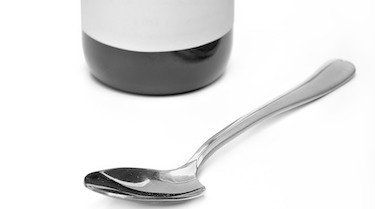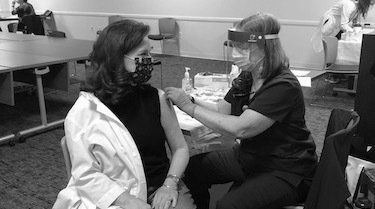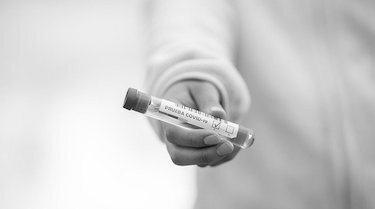Media Maven Proposes New Study
I’m really interested in the best data to back up the many ideas that are emerging about media influence in parenting.
When the AAP Council on Communication and Media (a committee on which I sit) said in 2011, “No screen time for kids under two… “ I knew which of my patients would see that idea as a bitter pill to swallow, but my intuition told me it was a sound recommendation. One sweet parent in particular considered it her daughters finest developmental accomplishment to swipe open Mom’s iPhone and launch a YouTube Kideo (and long before her second birthday!) Mother and daughter would be pleased to meet my AAP-COCM colleague, Dimitri Christakis, MD who recanted his support of the AAP policy statement in March of 2014. He’s now suggesting that up to an hour on the iPad might be just fine for kids under two. Hmmm…
In truth, he might be right, but I admit that I did wonder if he had a child in the intercurrent years and discover, as many of us have: the Media Babysitter.
Dr. Christakis is very interested in media effects on our children. In 2002, he published a frequently cited (and sometimes criticized) study suggesting that early TV viewing is associated with later hyperactivity in our children. Another of his studies showed that kids who watch SpongeBob usually jump on the couch and act like that character after the episode is over. Well, that’s not exactly what he said, but I wrote about it previously if you want to read more. I love evidence-based medicine, and the most recent Christakis stud y looked at the quality of media as it effects our children. Evidence exists: some TV shows are just all around better for kids than others. Duh.
What parents really want to know is HOW we find the good stuff for our kids, how much of it is good for them, and regardless of age, how do we shield them from too much of what the neighbor’s kids are doing.
Media isn’t just TV anymore. It’s interactive video gaming, and iPads to engage with or passively watch. It’s Netflix and Hulu offering up any program at any time of the day or night. It’s viral YouTube videos of laughing babies and crazy cats. Facebook, Twitter, Tumblr and Instagram.
“And Mom. There’s really cool stuff amidst all this stuff. You can’t just pretend it’s all worthless garbage,” argues #3 at our dinner table.
Uhhhhm. OK, I tell him. Prove it.
For years, I said “No” to first person shooter games until #2 forged his argument using … you guessed it: CommonSenseMedia.org. The interactive posts made by parents and teens there helped him make his case for spending allowance on a combat game that ‘everybody’ was playing. At age 16, he was ready to move beyond SuperSmash Brothers, and I revised my restrictions.
I am ready to make my case with respect to the AAP Policy Statement retricting media use for kids under two. Media IS both good and bad for kids. My Policy Statement goes like this:
From now on, parents, you have to ‘do’ media with your kids to figure out HOW it’s is good and bad for them. If you think Baby Einstein Videos are good for your baby, watch them with her. Every time. No more video babysitter so you can check email. If you think Call of Duty ~ World at War is an OK game to teach about World War II, then play with your son or daughter. Even if it isn’t your ‘thing.’ Both parent and child stand to develop interesting abilities to self-monitor and self-regulate the time spent being a media maven.
Here’s how we study all these media effects as the self-designated Mavens. We develop an Open Source Platform for participants (something like a PatientsLikeMe.com website), and we ask parents to ‘do’ media with children. If the kids are watching Netflix, and we watch with them, we can log the shows. If the girl can swipe an iPad open and launch a YouTube cartoon, we watch with her and rate the experience. If the kids are playing SuperSmashBrothers, be Peach (and pick the Frying Pan. I can tell you it significantly improves your chances of winning.) Document the outcomes and experience.
Let’s start a log of all the varied media diets and some outcome data, and then let a computer digest it all. In Richmond, we don’t have a Children’s Hospital with this kind of media interest, but Dr. Christakis and his colleagues at Seattle Children’s are on the cutting edge. They could help us study cognitive development by noting the questions our kids ask after an episode of Phineas and Ferb or the nightly news. We could add new fine motor milestones to the Denver Developmental Screening Tool once we figure out how many youngsters can manage that iPad unlock. Surely there are other longitudinal markers of childhood and adolescent development that we can follow to look at what media exposure is really influencing as it evolves. Let researchers come back and look at report cards for how many A’s and how many ‘Runs With Scissors’ commentary they find. I could ask my pediatrician colleagues to get involved by validating their patients’ body mass index and make developmental assessments. We need to move fast with this idea, because kids move faster and the next new gadget is just around the corner for Christmas buying.
Because parents come in so many sizes and flavors, we will ultimately have a rich database of parenting approaches to media consumption. Correlate that data with who our kids are becoming and the allure of Big Data, will likely show trends and an evidence-based approach for what, in truth, we probably know already. Evidence-based recommendations may well always lag behind our children’s use and abuse of media. We have to pay attention today to what and how our kids are digesting the Media Diet they are offered. The best Policy Statement is likely to be simply this: Media is changing very rapidly, and it is having both good and bad influences on our children. Listen up. Pay close attention and enjoy media in moderation. “Do” screen time WITH your children, and it will help you know how much feels like enough. Nothing is all Good or all Bad.
The post Media Maven Proposes New Study appeared first on Partners in Pediatrics.
The DrDownload Blog









All Rights Reserved | Partners in Pediatrics, P.C. | 7110 Forest Avenue | Suite 105 | Richmond VA 23226


